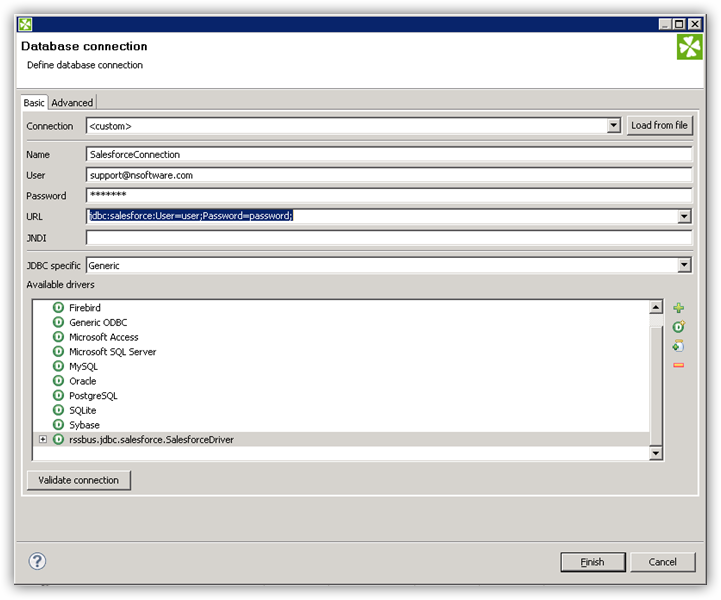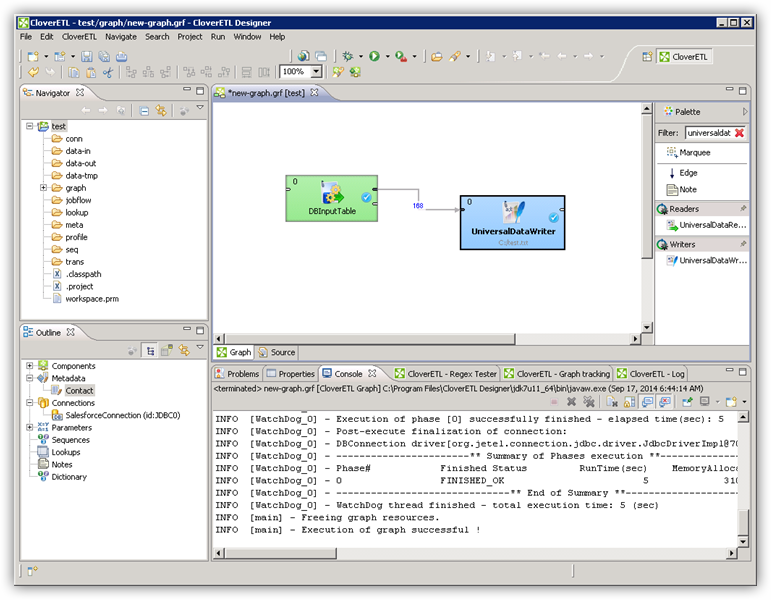Discover how a bimodal integration strategy can address the major data management challenges facing your organization today.
Get the Report →Connect to Certinia Data in CloverDX (formerly CloverETL)
Transfer Certinia data using the visual workflow in the CloverDX data integration tool.
The CData JDBC Driver for Certinia enables you to use the data transformation components in CloverDX (formerly CloverETL) to work with Certinia as sources and destinations. In this article, you will use the JDBC Driver for Certinia to set up a simple transfer into a flat file. The CData JDBC Driver for Certinia enables you to use the data transformation components in CloverDX (formerly CloverETL) to work with Certinia as sources and destinations. In this article, you will use the JDBC Driver for Certinia to set up a simple transfer into a flat file.
Connect to Certinia as a JDBC Data Source
- Create the connection to Certinia data. In a new CloverDX graph, right-click the Connections node in the Outline pane and click Connections -> Create Connection. The Database Connection wizard is displayed.
- Click the plus icon to load a driver from a JAR. Browse to the lib subfolder of the installation directory and select the cdata.jdbc.certinia.jar file.
- Enter the JDBC URL.
There are several authentication methods available for connecting to Certinia: login credentials, SSO, and OAuth.
Authenticating with a Login and Token
Set the User and Password to your login credentials. Additionally, set the SecurityToken. By default, the SecurityToken is required, but you can make it optional by allowing a range of trusted IP addresses.
To disable the security token:
- Log in to Certinia and enter "Network Access" in the Quick Find box in the setup section.
- Add your IP address to the list of trusted IP addresses.
To obtain the security token:
- Open the personal information page on certinia.com.
- Click the link to reset your security token. The token will be emailed to you.
- Specify the security token in the SecurityToken connection property or append it to the Password.
Authenticating with OAuth
If you do not have access to the user name and password or do not want to require them, use the OAuth user consent flow. See the OAuth section in the Help for an authentication guide.
Connecting to Certinia Sandbox Accounts
Set UseSandbox to true (false by default) to use a Certinia sandbox account. Ensure that you specify a sandbox user name in User.
Built-in Connection String Designer
For assistance in constructing the JDBC URL, use the connection string designer built into the Certinia JDBC Driver. Either double-click the JAR file or execute the jar file from the command-line.
java -jar cdata.jdbc.certinia.jarFill in the connection properties and copy the connection string to the clipboard.
![Using the built-in connection string designer to generate a JDBC URL (Salesforce is shown.)]()
A typical JDBC URL is below:
jdbc:certinia:User=myUser;Password=myPassword;Security Token=myToken;InitiateOAuth=GETANDREFRESH

Query Certinia Data with the DBInputTable Component
- Drag a DBInputTable from the Readers selection of the Palette onto the job flow and double-click it to open the configuration editor.
- In the DB connection property, select the Certinia JDBC data source from the drop-down menu.
- Enter the SQL query. For example:
SELECT BillingState, Name FROM Account WHERE Industry = 'Floppy Disks'
Write the Output of the Query to a UniversalDataWriter
- Drag a UniversalDataWriter from the Writers selection onto the jobflow.
- Double-click the UniversalDataWriter to open the configuration editor and add a file URL.
- Right-click the DBInputTable and then click Extract Metadata.
- Connect the output port of the DBInputTable to the UniversalDataWriter.
- In the resulting Select Metadata menu for the UniversalDataWriter, choose the Account table. (You can also open this menu by right-clicking the input port for the UniversalDataWriter.)
- Click Run to write to the file.








